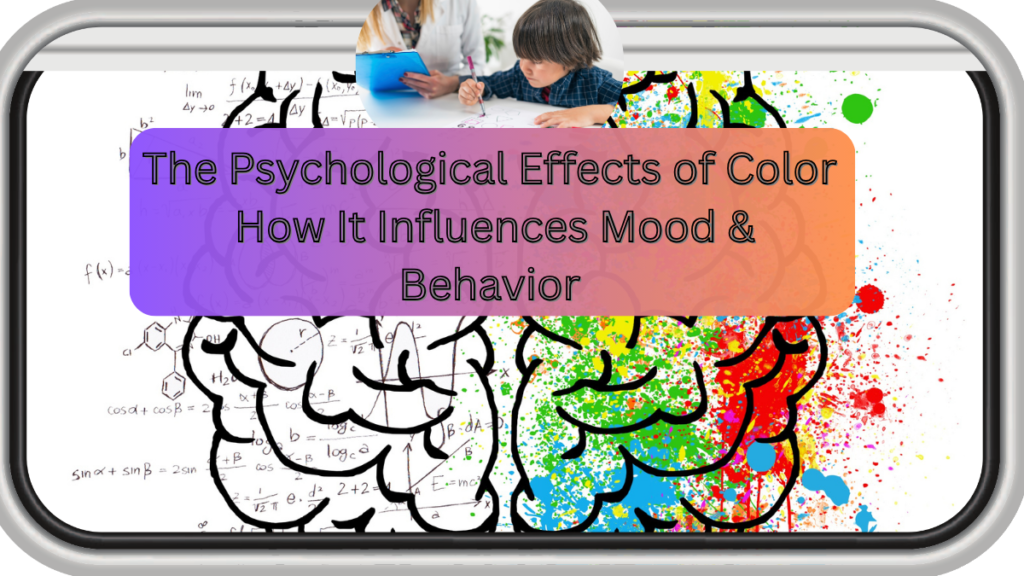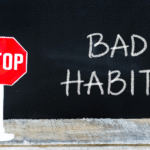Psychological Effects of Color
Have you ever walked into a room and instantly felt calm, energized, or even uneasy—without knowing why? Chances are, color played a big role in that reaction. From the clothes we wear to the walls of our homes, color silently shapes our emotions, decisions, and even behaviors.
In this post, we’ll dive deep into the psychology of color, exploring how different hues affect our mood and actions. Whether you’re redecorating your home, designing a brand, or just curious about why certain colors make you feel a certain way, this guide will give you valuable insights.
How Color Psychology Works
Color psychology studies how different shades influence human emotions and decision-making. While individual experiences and cultural backgrounds can shape personal reactions, research shows that colors trigger universal psychological responses.

For example:
- Red is often linked to passion, urgency, or even danger.
- Blue evokes calmness, trust, and professionalism.
- Yellow is associated with happiness and energy but can also cause anxiety in excess.
Understanding these effects can help you make smarter choices in design, marketing, and even daily life.
How Different Colors Affect Mood & Behavior
1. Warm Colors: Energy & Emotion
Warm colors (red, orange, yellow) are bold and stimulating.
- Red – Increases heart rate and creates a sense of urgency (think clearance sales!). However, too much red can feel aggressive.
- Orange – Friendly and inviting, great for social spaces. It’s also linked to creativity.
- Yellow – Boosts optimism but can be overwhelming in large doses. Soft yellows work better for relaxation.
Best for: Restaurants, gyms, and call-to-action buttons.
2. Cool Colors: Calm & Focus
Cool colors (blue, green, purple) are soothing and promote concentration.
- Blue – Lowers stress and enhances productivity. Many offices use blue for a calm work environment.
- Green – Symbolizes nature, balance, and renewal. Hospitals often use green for its healing effect.
- Purple – Associated with luxury and creativity. Lighter purples (like lavender) are calming, while deep purples feel regal.
Best for: Bedrooms, healthcare settings, and corporate branding.
3. Neutral Colors: Balance & Versatility
Neutrals (white, black, gray, beige) provide a backdrop that lets other colors shine.
- White – Represents purity and simplicity but can feel sterile if overused.
- Black – Conveys sophistication and power but may feel heavy in excess.
- Gray – Professional and balanced, but too much can feel dull.
Best for: Minimalist designs, professional spaces, and accent pairings.
Video Credits
Practical Tips to Use Color Psychology in Daily Life
Want to harness the power of color? Here’s how:
1. Choose the Right Colors for Your Home
- Bedroom: Soft blues or greens for relaxation.
- Home Office: Blues or light greens to boost focus.
- Kitchen: Warm tones like red or orange to stimulate appetite (but use sparingly).
2. Dress for the Mood You Want
- Need confidence? Wear red or black.
- Want to appear approachable? Try pastels or soft blues.
3. Use Color in Marketing & Branding
- Restaurants: Reds and yellows to encourage appetite.
- Wellness brands: Greens and blues for a calming effect.
4. Be Mindful of Cultural Differences
Colors have different meanings worldwide. For example:
- White symbolizes purity in Western cultures but mourning in some Asian cultures.
- Red means luck in China but danger in the U.S.
Final Thoughts: Harnessing the Power of Color
Color is more than just decoration—it’s a powerful psychological tool. By understanding how different hues influence emotions and behavior, you can make intentional choices in your surroundings, wardrobe, and even branding.
Want to experiment? Start by introducing small color changes in your space and observe how they make you feel. Over time, you’ll develop a keen sense of which colors work best for different purposes.
Your Turn!
Have you noticed how certain colors affect your mood? Share your experiences in the comments below! And if you found this post helpful, don’t forget to share it with friends who love design, psychology, or self-improvement.










